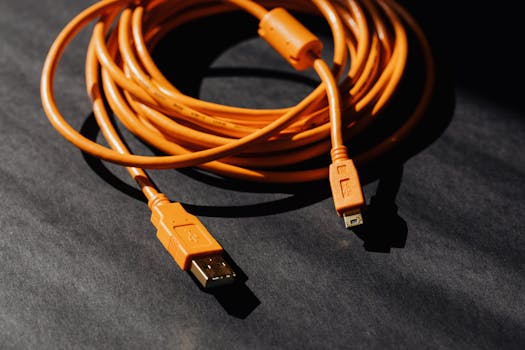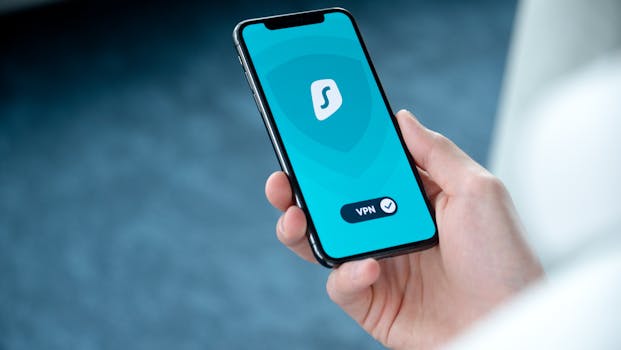Career
Beginner freelancer: how to get your first clients and contracts
Step-by-step action guide for every beginner freelancer who wants real clients and contracts. Unique tactics, ready-to-use scripts, and portfolio strategies that work for freelancers.
Advertisement
Stepping into freelancing is both exciting and uncertain. Landing your first contracts marks a key milestone. Many who call themselves a beginner freelancer face confusion about where to start.
This journey matters because securing initial clients transforms vague skillsets into real interactions that shape future work. It also enables a beginner freelancer to practice negotiation and self-presentation.
Explore proven strategies in these sections. Whether you’re an aspiring designer, writer, or developer, you’ll discover detailed guidance that you can act on today.
Sharpen Your Offer: Define, Package, and Present Yourself Clearly
Successful beginner freelancers who earn their first contracts establish a clear offering from the outset. Clarity gives prospects concrete reasons to respond and reach out.
Drilling down to specific services speeds trust building. For a beginner freelancer, this means writing offers clients can easily say yes to, instead of generic promises.
Craft a Targeted Service Statement
Direct statements help clients understand exactly what you’ll deliver. “I’ll build a four-page website in one week, including revisions” shows confidence and predictability.
A beginner freelancer who chooses to specialize, even temporarily, looks much more prepared than one who lists every known skill in a single pitch.
Use direct headlines such as “Social Media Graphics for Small Businesses.” Change the wording to fit your core service and each platform you use.
Structure Your Pricing for Decisiveness
Transparent packages reduce friction for those buying from a beginner freelancer. “Logo and business card pack – $120. Delivery in five days.”—gives buyers control over expectations.
A competitor comparison also adds clarity. Check what others charge, but don’t simply undercut. Emphasize value, delivery speed, or bonus support to tip the scale in your favor.
Price confidence keeps negotiations short. Package extras as “add-ons,” so clients can upgrade easily and you earn more with each contract.
| Service | Client Need | Starter Price ($) | Key Takeaway |
|---|---|---|---|
| Logo Design | Brand Identity | 100–200 | Package revisions; promise delivery date. |
| Blog Writing | Content Creation | 25–60 per article | Specialize by industry or topic. |
| Website Setup | Online Presence | 250–500 | Offer initial support after launch. |
| Social Media Management | Audience Growth | 120–300/month | Bundle posts and reporting services. |
| Email Campaigns | Lead Generation | 80–180 | Display past results or case studies. |
Build Portfolio Pieces with Purpose and Show Your Work Boldly
Create concrete evidence before applying for your first paid gigs. A beginner freelancer gains credibility by sharing completed projects—even those self-assigned or hypothetical.
Make every item in your portfolio solve a recognizable need. Instead of filling pages with random samples, curate them to speak directly to your target client.
Lead with Problem-Solution Examples
Your portfolio should say, for example, “I took a cluttered website and doubled the client’s click rate by redesigning the navigation.”
A beginner freelancer can borrow scenarios from friends or nonprofits by offering to solve small but painful business problems they describe.
Include screenshots, annotations or a one-paragraph summary of the challenge and how you tackled it effectively.
- Deliver three strong case studies: Use a free project, a volunteer piece, and a personal sample for range and credibility. Show actual before-and-after examples, not just templates.
- Document your creative process: Outline initial brief, brainstorm, revision stages, and final delivery. A beginner freelancer can highlight lessons learned from each step for depth.
- Write work summaries in your voice: Briefly explain what choices you made and why, so potential clients see your practical thinking and technical skill combined.
- Show only your best: Remove outdated, off-brand, or incomplete work. It’s better to have two polished samples than five mediocre ones in your beginner freelancer portfolio.
- Update as you grow: Replace earlier samples each quarter to keep your offering sharp and relevant, demonstrating your progression as a beginner freelancer.
Use tangible results to move from generic “examples” to persuasive proof, persuading prospects to get in touch as they imagine hiring you for similar outcomes.
Curate Testimonials and Mini-Cases Early
A short, honest comment from a past collaborator, friend, or volunteer client is invaluable. A beginner freelancer can follow up projects with a single-sentence feedback request.
Combine testimonials beneath each portfolio item: “Janet: ‘She delivered my flyer in two days. I’d hire her again.’” Attach these directly to the work for instant credibility.
- Ask for specific feedback: Guide your contact to mention timing, creativity, or problem-solving. “He delivered ahead of deadline, saving my weekend.”—shows your reliability under pressure.
- Start with your network: Friends, classmates, or volunteer contacts are usually willing to write two lines if you share what to highlight in their comments.
- Follow up politely: Wait one day after finishing a project, then send a thank-you message with a short template for them to complete.
- Display with permission: Only feature names and business logos if you have direct consent, ensuring trust and professional appearance as a beginner freelancer.
- Highlight variety: Include testimonials from more than one type of client to show your adaptability and comfort with new relationships in your beginner freelancer journey.
Consistent, small steps in curating this social proof compound into a reputation that new clients find easier to trust.
Seek Out the Best Platforms and Groups for Beginner Freelancers
Strategically picking where to look for gigs helps beginner freelancers avoid overwhelm and wasted time. Concentrate on platforms that attract real clients seeking your core skill set.
Avoid platforms with excessive competition or clients seeking “free labor.” Instead, use those designed to highlight new talent or specific fields you want to enter.
Choose the Right Entry-Level Marketplace
Some websites cater to beginner freelancers, making discovery easier. Focus your early efforts on these, even if the initial pay is moderate.
On such sites, look for “New to Freelance” or “Starter Projects” filters. This helps target jobs that reward focus and reliability over deep experience.
After every project on these platforms, request ratings. High early feedback helps your profile rise—and gives new clients confidence to choose you again.
Join Skill-Based and Local Communities
Online groups and local meetups unlock opportunities an algorithm might overlook. A beginner freelancer can join a Slack group, Discord server, or local Facebook network for their specific skill.
These networks alert members to new job postings or ad-hoc projects. Introduce yourself clearly and respectfully, stating your availability and what you’re ready to tackle.
Consistent participation—responding to requests and helping with peer questions—makes your name recognizable and boosts word-of-mouth referrals for a beginner freelancer.
Nail Your First Outreach: Email Scripts and Direct Messaging That Work
Direct outreach, when done thoughtfully, opens doors faster for a beginner freelancer than waiting for jobs. Get specific and personal, and clients are more likely to reply.
The key outcome: You’ll secure responses, interviews, or even referrals, by reaching out professionally and tailoring each message to the client’s needs and language.
Email Script for Proactive Contact
Email: Subject line – “Available to help with [service] for [business type].” Greet by first name and refer to a recent project or challenge they’ve discussed online.
Briefly introduce yourself as a beginner freelancer and state the core value you can add. Suggest a concrete next step—like a 15-minute call within the week.
End with one specific question, not a generic “Let me know.” For example, “Would Tuesday or Friday morning work better to discuss your newsletter project?”
LinkedIn Outreach You Can Reuse
LinkedIn is invaluable for a beginner freelancer breaking out of their immediate circle. Connect with prospects in your city or sector, writing a unique greeting each time.
A short note: “I enjoyed your article on [topic]. I’m building my first client roster as a [your service]. Might I share ideas or samples that fit your business?”
If there’s no immediate reply, share a relevant portfolio item a week later—without any follow-up request. This maintains interest without pressuring the recipient.
| Platform/Group | Contact Method | Response Rate | What to Try Next |
|---|---|---|---|
| Local Facebook Group | Personal Messages | High | Join job threads, share your latest portfolio item weekly. |
| Upwork Entry-Level | In-site Proposals | Moderate | Bid daily; revise your pitch based on rejections. |
| Slack Communities | Channel Intros | High | Post your offer Mondays; comment helpfully on peer posts. |
| Direct Messages | Moderate | Personalize each message; wait 72 hours before follow-up. | |
| Email Outreach | Direct Email | Varies | Mention a concrete problem you can solve; keep it under 150 words. |
Turn Small Wins Into Real Contracts and Recurring Work
Securing repeat business converts small wins into a stable freelance career. A beginner freelancer should treat every short-term project as a trial run for larger collaborations.
Always over-deliver by handling minor tasks unasked or submitting ahead of schedule. This distinguishes you from others, triggering positive word-of-mouth in client circles.
Follow Up With Specific Renewal Offers
After finishing a project, thank the client personally in your closing email. Offer a “next step,” like a discounted second project or a monthly retainer trial.
Beginner freelancers who follow up after delivery win more contracts than those who wait passively for feedback. Suggest a quick call or email in two weeks to check on results.
For example: “If you found the newsletter helpful, I can draft a regular sequence for next month—could we discuss this Friday?”
Systemize Your Project Handoffs
Consistent documentation builds client confidence. Send a summary of work, links to deliverables, and short next-step suggestions in a final handoff email or shared document.
A beginner freelancer can create templates for final reports that highlight ROI, creative changes, or user feedback collected during the project.
Over time, this habit strengthens trust, encouraging repeat projects or regular contract renewals without the need for new cold outreach.
Level Up with Honest Feedback and Community Support
Constructive criticism from peers or seasoned freelancers boosts a beginner freelancer’s growth, yielding sharper marketing and stronger processes for future contracts.
Join peer critique groups or online challenges that prompt realistic reviews of your portfolio or recent client work. Learning what lands well is half the battle.
Leverage Accountability Partners
Pair with another beginner freelancer or mentor for regular check-ins. Set weekly targets: “Send five pitches” or “Update two portfolio pages.”
Discuss what went right or how to rephrase your offer to land more contracts. Trade constructive feedback, not just encouragement, to accelerate breakthroughs.
Celebrating progress, no matter how small, inspires confidence and resilience while building your network from day one.
Join Feedback-Driven Events or Forums
Attend virtual or local portfolio review events. Beginner freelancer portfolios reviewed live gain expert and peer input in real time—immediate perspective shows blind spots and areas for improvement.
Comment helpfully on others’ work, and you’ll receive actionable insights in return. “The headline on your flyer could be bolder; colors distract from the call-to-action.”
Consistent engagement earns respect and a ready support system for sharing new wins and troubleshooting setbacks.
Momentum Matters: Keep Going as You Refine and Grow
With every outreach, portfolio update, or small win, a beginner freelancer moves closer to reliable income and steady contracts—proof the effort compounds meaningfully.
Don’t compare yourself to long-time freelancers. Your unique path, built step by step, brings lessons and connections that shape your reputation and workflow.
Stay curious, ask for feedback, and try new approaches as you collect that all-important experience. Today’s first contract supports tomorrow’s opportunities, making your growth as a beginner freelancer unstoppable.





